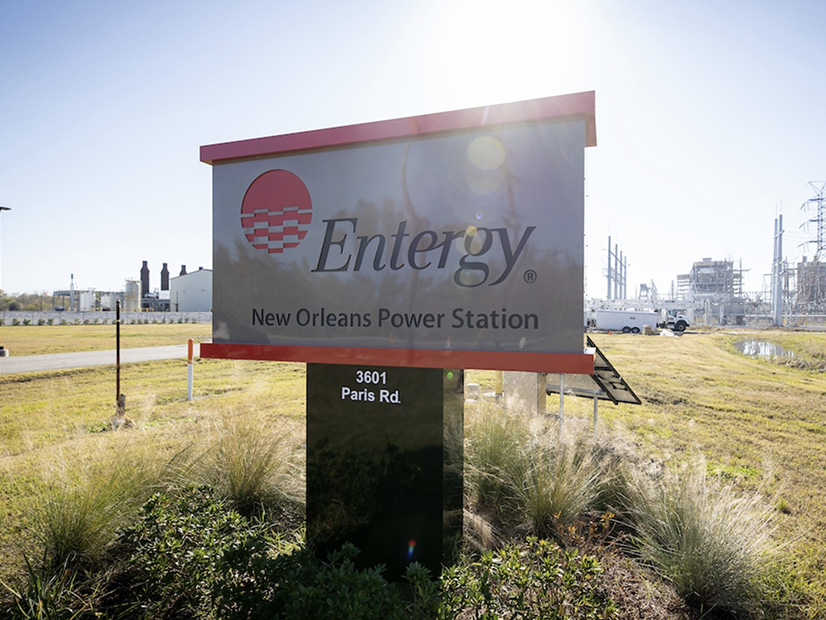A week after Hurricane Ida clobbered Louisiana, Entergy leadership said Monday that “near-miraculous” restoration work had returned power to 70% of New Orleans.
Entergy Louisiana CEO Phillip May said the utility had restored power “and a sense of normalcy” to 54% of the 948,000 total customers who lost power across Louisiana and Mississippi.
But for customers in outlying Bayou areas, most of September could be spent without electricity. Entergy said it could be Sept. 29 until the Lower Jefferson, Lafourche, Plaquemines, St. Charles and Terrebonne parishes regain power.
“In the hardest hit region, it’s going to be a rebuild, not a repair,” May again stressed in a Sept. 6 press call. “There is considerable damage as you get into the Bayou region.”
May said Ida was “one of the most destructive hurricanes to ever strike U.S. soil,” packing an “unprecedented level of destruction and devastation.”
“The damage in terms of pole counts is worse than Hurricane Katrina, Delta and Zeta combined,” said John Hawkins, vice president of distribution operations for Entergy Louisiana.
Hawkins said crews found damage beyond what was expected in some areas.
“Changing estimated restoration dates can and will happen in almost any restoration,” he added.
But Hawkins said some of Entergy’s restoration was completed earlier than originally anticipated, in the case of most of Baton Rouge, which was returned to service by Sept. 5, ahead of Entergy’s original Sept. 8 estimate. He said connecting Baton Rouge earlier than expected frees up crews to descend upon rural spots and areas that were initially inaccessible after the hurricane.
“But I’m going to have to temper this good news,” Hawkins said, noting a tropical depression in the Gulf that has a slight chance of striking Louisiana this week.
“Unfortunately, it could bring rain to our already saturated area” and slow restoration work, he said.
“This is a good day,” Entergy New Orleans CEO Deanna Rodriguez said, emphasizing that Entergy was able to restore nearly 70% of the 205,000 New Orleans customers without power within a week.
“I’m going to repeat that because it’s so monumental,” she said. “I think it’s near-miraculous the speed at which we’ve been able to return customers.”
Rodriguez said nearly 90% of greater New Orleans should have lights by Sept. 8. She said Entergy will prioritize supply to pharmacies, banks, gas stations and grocery stores so more residents can return.
May said Entergy was able to restore key pumping stations for crude oil refineries along the coast. He declined to identify any stations that were restored.
May also announced an open-ended pause on late fees and shutoffs for all Louisiana customers
“We’re proud of what we’ve accomplished,” he said. “But we have a long way to go.”
Raised Eyebrows over Blackstart Decisions
As more of Louisiana is lit, New Orleans leadership is questioning why Entergy didn’t tap the New Orleans Power Station to switch on a portion of New Orleans in Ida’s immediate aftermath.
May, on a Sept. 2 media call, insisted the power station “absolutely” has the ability to blackstart, but said it was not the “preferred path” in this case.
May said a nearly three-day wait to connect the power plant to a line from nearby Slidell in Cleco territory allowed the utility to use the plant as a “shock absorber” and restore New Orleans in “a more controlled and more robust way.” (See Entergy Energizes Second Tx Line, Generator.)

“It is not a question of whether it can or cannot. It absolutely can,” May said of the decision not to activate blackstart service. “The best way of assuring we can rapidly bring up power in the greater New Orleans region is the path we chose with a source out to the east.”
Entergy said it was “fully prepared” to generate within the islanded city but said “having the tie to the rest of the power grid provides a more stable and resilient supply to customers and allows us to bring in power from other sources.” It insisted the plant was functioning as designed.
However, New Orleans City Council President Helena Moreno said ratepayers who are paying for the plant “deserve answers.” She promised a “deep dive” into why the plant was not started without assistance from the MISO system.
Entergy executives repeatedly told the council that the plant could not start without connecting to the larger grid after the storm, Moreno said in a Facebook post.
“That’s contrary to all the testimony the previous council received when it approved the plant in 2018,” she wrote.
Entergy New Orleans ratepayers funded the New Orleans Power Station’s construction through an additional $11/month fee on their bills.
Four years ago, former Entergy CEO Charles Rice said in written testimony that the plant would “include black-start capability, which will enable the company to start the unit even when there is no power on the electric grid.”
“This will give the company the ability to restore electric service, should a complete loss of service occur. This could be a tremendous benefit if New Orleans is electrically ‘islanded’ from the rest of the interconnected transmission grid, as it was after Hurricane Gustav,” Rice said.
Hurricane Gustav in 2008 islanded the New Orleans-Baton Rouge from the grid for more than 33 hours when 14 transmission circuits tripped offline, requiring resynchronization.
Entergy also told the council in filings that the plant’s blackstart feature would be “critically important” given the area’s risk for extreme weather and that its “close electrical proximity to electric demand” could keep voltage and frequency in check during restoration activities.
The New Orleans Power Station can supply only about 10% of New Orleans’ more than 1 GW needs.



